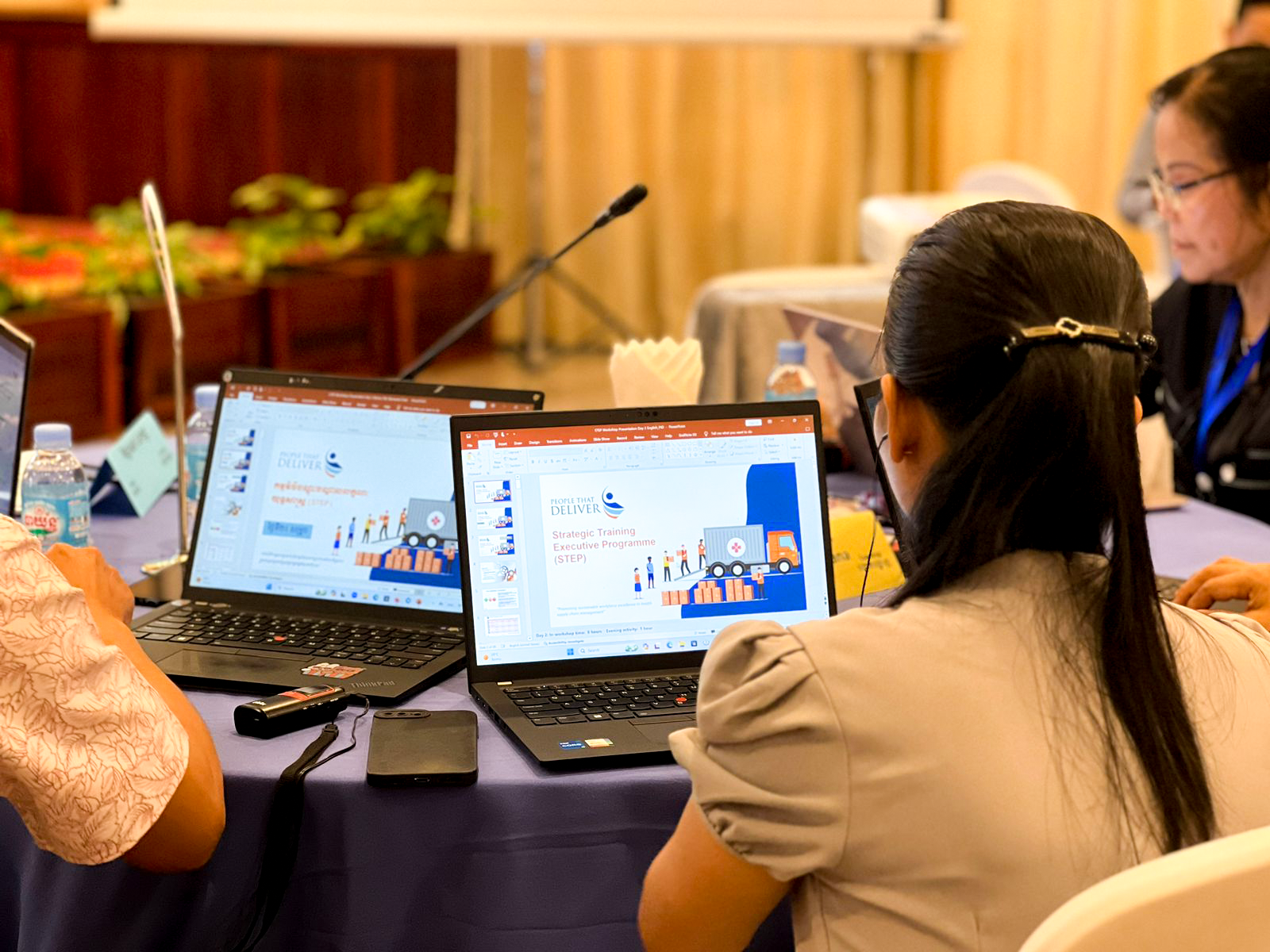A new paper – Strategic Training Executive Program 2.0: A Leadership and Change Management Program for Health Supply Chains in Low- and Middle-Income Countries – published by People that Deliver (PtD), points to leadership – and particularly the STEP 2.0 programme – as one of the keys to supporting health supply chain systems to provide access to health commodities.
Kevin Etter, long-time collaborator on the STEP 2.0 programme, talks about the new research, the importance of leadership and the impact the programme is having on public supply chains.
The recently-published paper points to the importance of developing the leadership capacities of public health supply chain leaders. Why is this is so important?
Over a decade ago it was apparent, to PtD, GAVI (now Gavi, the Vaccine Alliance), USAID and UNICEF, that the prevalent leadership style in LMICs – a traditional and outdated “command and control” methodology, where the leader retained all knowledge, authority and decision-making power – was limiting the potential of health supply chains to perform optimally.
Quite simply, this style of management is inadequate, especially when confronted with the complexities of current health supply chain system challenges. Leadership and change management competencies, on the other hand – those that are nurtured throughout the six-month programme – enable supply chain management professionals to take charge of their own development agenda.
What kind of leadership techniques does the STEP 2.0 programme develop?
Private sector best practices reveal that team-based collaborative leadership provides nimbleness and speed to address problems, so it is these that are the focus of STEP 2.0. By learning from private-sector coaches – whose expertise is so crucial to the programme – the participants, who tend to be health supply chain leaders in low- and middle-income countries (LMICs), learn how to navigate change by accentuating their soft skills; it is these skills that are at the centre of the programme.
Optimising health supply chain management leadership competencies contributes to commodity and medicine availability and leads to improved health outcomes in low- and middle-income countries. As part of the programme, participants identify a challenge they are facing in their organisations and apply these newly-developed skills to overcome this problem.
What impact has the programme had so far?
We have recently developed a monitoring and evaluation (M&E) framework that all implementing partners are now using to track a number of indicators related to the programme. Over time, the data collected will allow us to identify trends. In the paper we highlighted some of the early results.
We talk about one recent example of the programme having a positive impact. In 2023, 25 leaders and managers from Rwanda Medical Supply Ltd – the public organisation responsible for ensuring the country’s access to health commodities – participated in and graduated from STEP 2.0. We saw a 20 percent increase in participant competencies over the course of the programme. As we pointed out in the paper, it seems that when a competency is prioritised and targeted for development, an increase in competency rating is more likely to be achieved.
Much of the paper centres on the collaboration among PtD and the donors: Gavi, USAID, UNICEF and the International Federation of Pharmaceutical Wholesalers (IFPW). What are the strengths of this collaboration?
The programme was born out of donor collaboration.
In 2019, PtD convened a workshop with representatives from Gavi, the Global Fund, UNICEF, USAID, and UPS. The workshop focused on the two prevailing leadership development programmes led by PtD coalition members: Gavi’s STEP and USAID’s Transformational Leadership programme. Given the similarity of the programmes and overlapping target audiences – ministry of health employees responsible for health supply chain leadership and management at all levels of the health systems – the representatives agreed that for the sake of efficiency and to reduce confusion, only one programme should be offered. The best of these two programmes merged to form STEP 2.0.
This multi-donor approach is a fundamental cornerstone of the long-term sustainability of the programme. To diversify funding sources, the three donor organisations (Gavi, the Global Fund and USAID) initially signed a collaboration framework that enabled joint sponsorship and support of STEP 2.0. IFPW later signed this framework, which outlined the governance policies for the programme and established the PtD STEP 2.0 hub to oversee its governance.
What is your advice to countries that may be interested in STEP 2.0?
We always knew anecdotally that STEP 2.0 boosts leadership capacity in LMICs, but now with the data being produced by the M&E framework – and backed by a peer-reviewed paper – we are developing evidence that really demonstrates the programme’s impact on health commodity access. We advise involving senior management in the process of identifying supply chain challenges and therefore the areas in which Your transformation challenge should focus. This helps ensure future interventions align with existing plans and strategies, and is crucial to their sustainability.
The programme is funded by donor organisations so if you are interested in enrolling your health supply chain leaders in STEP 2.0, let the donors know. Also get in touch with the STEP 2.0 hub to discover more about the programme and to find out if any implementations are planned for your country.
Read the paper here, learn more about STEP 2.0 or contact the STEP hub.

